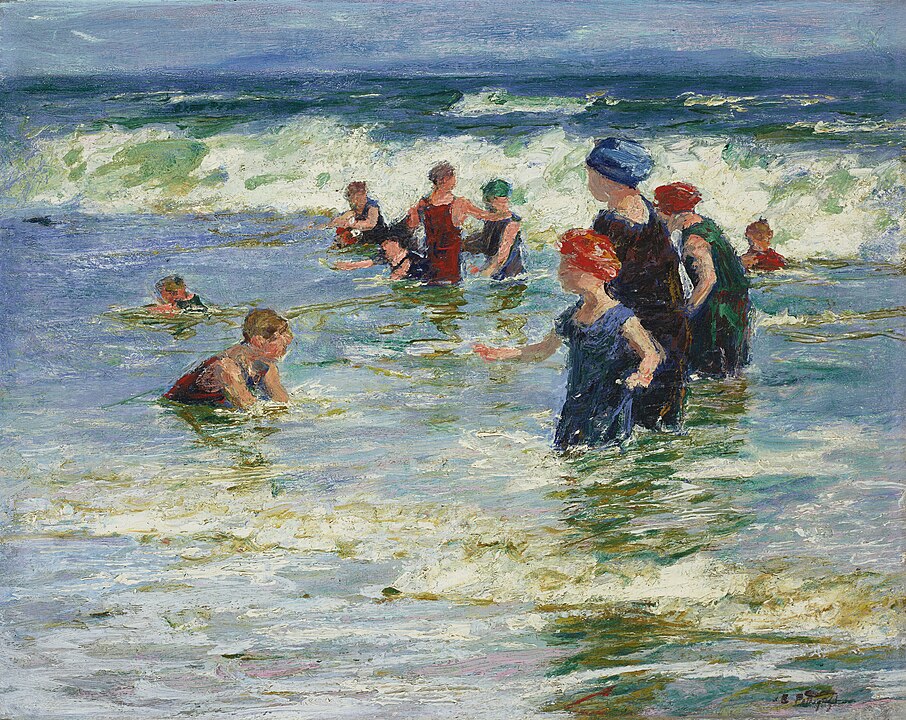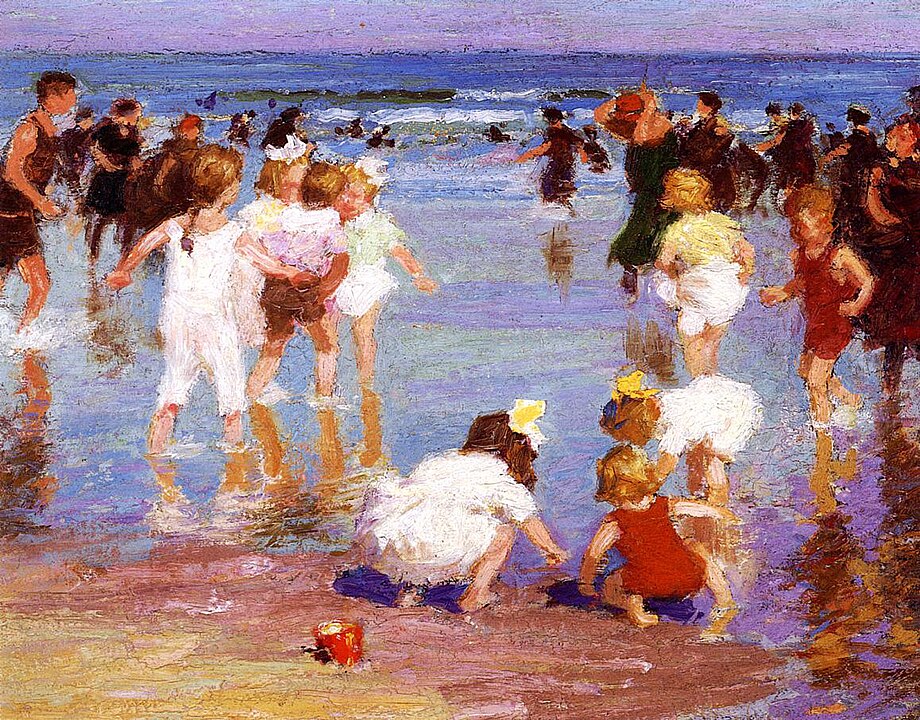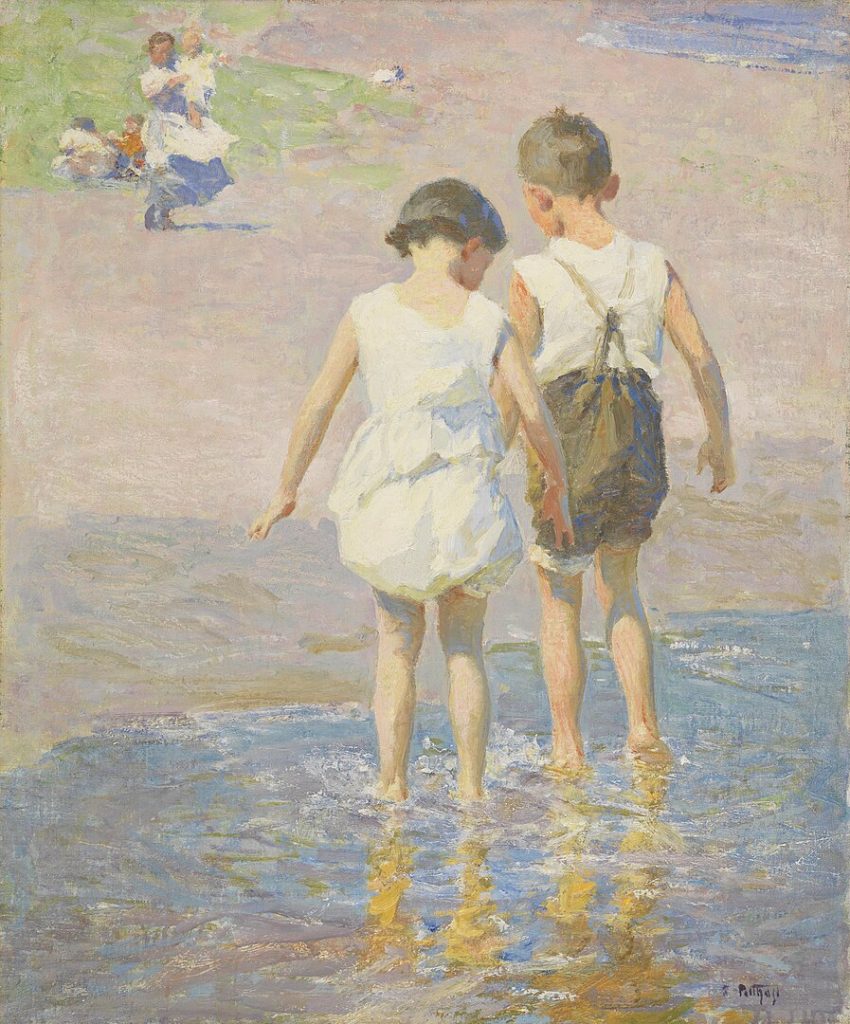
Edward Henry Potthast (1857–1927) was an American Impressionist painter known for his beach scenes, depictions of leisure, and vibrant use of color. Here are key points about the life of Edward Henry Potthast:
- Early Life:
- Edward Potthast was born on June 10, 1857, in Cincinnati, Ohio, USA, to a family of German descent.
- He showed an early interest in art and began studying at the McMicken School of Design (later known as the Art Academy of Cincinnati) at the age of twelve.
- Artistic Training:
- Potthast continued his art education at the Royal Academy in Munich, Germany. He also spent time studying in Paris, where he was exposed to the Impressionist movement.
- Return to the United States:
- After his studies in Europe, Potthast returned to the United States and established himself as a professional artist in Cincinnati. He initially worked as an illustrator and portrait painter.

- Move to New York:
- In 1895, Potthast relocated to New York City, where he became associated with the vibrant art scene. He began to gain recognition for his beach scenes and depictions of leisure activities.
- Impressionist Style:
- Potthast’s style was influenced by Impressionism, characterized by loose brushwork, a focus on light and color, and a desire to capture the transient effects of nature.
- He often painted scenes of people enjoying the beach, parks, and other outdoor recreational spaces.
- Exhibitions and Recognition:
- Potthast exhibited regularly at prominent art institutions, including the National Academy of Design and the Art Institute of Chicago. His works were well-received by both critics and the public.
- Subjects and Themes:
- Beach scenes, children playing, and leisure activities were recurring themes in Potthast’s paintings. He had a knack for capturing the joy and innocence of these everyday moments.
- Artistic Associations:
- Potthast was associated with the Ten American Painters, a group of American Impressionists who broke away from the traditional art establishment to exhibit their works independently.
- Family Life:
- Potthast married and had six children. His family often appeared in his paintings, contributing to the warmth and domesticity of his art.

- Later Years and Legacy:
- Edward Henry Potthast continued to paint throughout his life, contributing to the American Impressionist movement.
- His works are now held in major collections and museums, including the Metropolitan Museum of Art in New York.
- Death:
- Edward Henry Potthast passed away on March 9, 1927, in New York City, leaving behind a legacy of vibrant and joyous paintings that capture the spirit of American life in the late 19th and early 20th centuries.
Edward Henry Potthast’s legacy endures through his contributions to American Impressionism and his ability to convey the simple pleasures of life through his art. His beach scenes and depictions of leisure remain popular and continue to be celebrated for their timeless charm.






